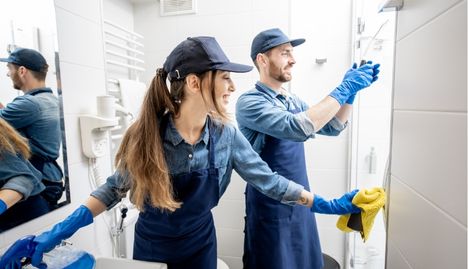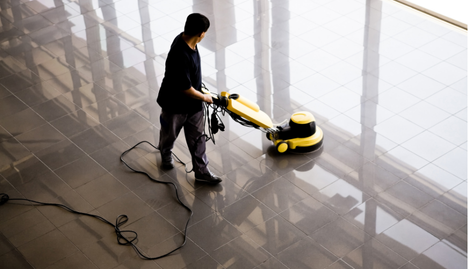Choosing the Right Disinfectants: Understanding Active Ingredients and Uses
The use of disinfectant is essential to prevent the spread of harmful germs, bacteria and viruses. But with so many types available, how do you know which one is best? Paying attention to the active ingredients is hugely important, as they determine both the effectiveness and suitability of the solution for your chosen area.
In this guide, we will discuss why the use of disinfectants is significant, the appropriateness of common active ingredients for various surfaces and environments, and we'll share some tips to support you in choosing the best disinfectant for your requirements.
Why Do We Need Disinfectants?
Although you may not see it, bacteria can be found absolutely everywhere. In many cases, this is completely normal, and won't affect you in any way. On the other hand, some of these microorganisms can cause you to become unwell, as they carry diseases.
Without killing these types of bacteria, you may be more susceptible to colds, flu and other infectious diseases. Disinfectants are the most effective way of killing the bacteria, because they contain active ingredients that break down the cell of the microorganisms.
The Most Common Active Ingredients And When To Use Them
Each disinfectant is created with a specific purpose in mind, therefore what you choose will depend on your specific purpose. Find out more about the different types of active ingredients below:
Quaternary Ammonium Compounds (Quats)
A widely-used disinfectant that can be found in household sprays and wipes. Quats is effective against bacteria and envelope viruses such as influenza and is commonly used on general surfaces, electronics and doorknobs.
Alcohol
Alcohol is an extremely effective and rapid disinfectant. It evaporates quickly, and does not require additional wiping or rinsing. Alcohol is mostly found in hand sanitisers and surface wipes, and it kills bacteria and multiple viruses.
Sodium Hypochlorite (Bleach)
Bleach is a powerful disinfectant that is best used for heavily soiled areas, bathrooms or floors. It should, however, be handled with care as it discolours fabrics, corrodes metal and could let emit harmful fumes if mixed with other chemicals.
Hydrogen Peroxide
Hydrogen peroxide is an eco-friendly choice, as it breaks down into water and oxygen. It is widely used within home cleaning products and healthcare settings. Although it is not as harsh as bleach, hydrogen peroxide still has the ability to fight bacteria, fungi, viruses and spores.
How To Choose The Right Disinfectant
When selecting a disinfectant, it would also be useful to consider the following:
Safety
Less toxic or fragrant free options are available for areas that are occupied by children, pets or those with allergies.
Purpose
Of course, one size does not fit all when it comes to disinfectants. Think about what you are going to clean and use the correct active ingredients for your requirements.
Surface Type
As well as increasing the effectiveness of your clean, choosing the right disinfectant also helps to reduce any damage to surfaces such as wood and fabrics.
Contact Time
Some disinfectants require a minimum amount of contact time in order to be effective. Choose faster active formulas for frequent cleans or when you are in a hurry.
Choosing the Right Disinfectants: Active Ingredients Matter
Understanding the different types of disinfectants and their active ingredients is vital if you are looking to achieve an effective clean. As well as needing to appropriately kill bacteria and prevent the spread of disease, the right cleaner will also protect your surfaces. If used incorrectly, stronger disinfectants, such as bleach, will discolour fabrics and can even erode metals.
If you have any questions about any of the disinfectants you see here on our website, feel free to reach out to our team. We have a wide range of cleaning solutions for all residential and commercial cleaning tasks.







